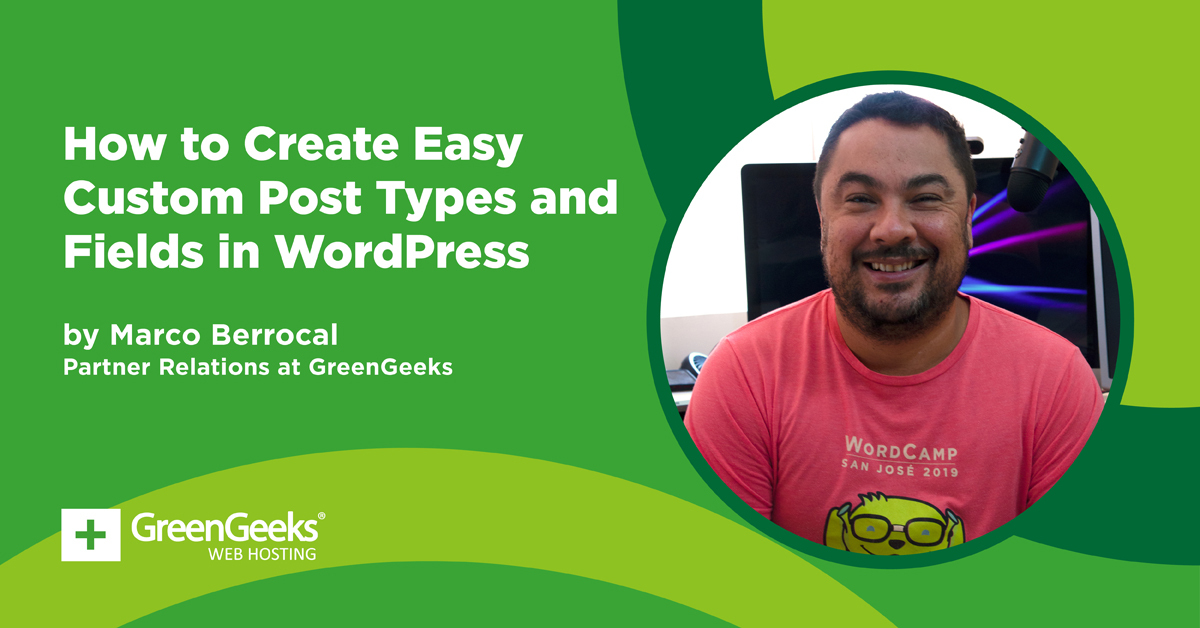
[ad_1]
Custom post types and fields add a layer to content creation that allows people to make just about any kind of website they want. In this webinar, our very own Marco Berrocal will show you how to easily create them and why you’d want to.
Although WordPress doesn’t offer custom post types out of the box, a lot of plugins and themes will add them for certain functions. This is in addition to what you can do on your own with this webinar.
WordPress is highly flexible, which is one of the reasons why more than 40% of all websites on the Internet use the platform. Custom post types and fields are just a couple of the many facets that make the jewel that is WordPress sparkle.
What Is Available in This Webinar About Custom Post Types and Fields?
In this video, Marco goes over the important elements of WordPress and how post types themselves work. For those who want to take their content to the next level, there is quite a bit of information here that you may want to watch.
It’s important to note that custom post types and fields deliver more to the WordPress platform. You’re able to literally create any kind of website you want outside of blogging.
In fact, I know several people who’ll use WordPress to drive a single landing page as the entire website.
Difference Between Posts and Pages
By default, WordPress has two primary content types: posts and pages. Both of these work very differently, although are quite similar in design.
Simply put, posts are the regular pieces of content that are published at various intervals while pages are meant for more static content. For example, a page is often used for contact forms, business info and locations, and “About” pages…material that doesn’t change.
Posts in WordPress are usually shown in chronological order with the newest being first.
Creating Custom Post Types
In this webinar, Marco shows how to use the Custom Post Type UI plugin. It allows for creating custom post types and taxonomies in WordPress for nearly any purpose. It’s also one of the most popular plugins for developers to use.
He also shows how to set up the basic settings and why certain fields are necessary for creating post types.
A Bit on Template Hierarchy
In this video, Marco breaks down how template hierarchy works and how you can use it to your advantage. Using a real-time example of movies, Marco shows how all of the content is connected.
Depending on the types of posts you’re creating, the template hierarchy is vastly important when looking for specific files within your site.
What Custom Fields Are and Why Use Them
Custom fields are sections of information you can add to a post that expands what you’re creating. For example, you can add a “ratings” field that accompanies the text of a post.
In reality, you can add just about any kind of content type as a field. This includes images, videos, radio buttons, and much more.
Marco also covers what you can do with another incredibly popular plugin, Advanced Custom Fields. He shows how to set up the field groups and their settings.
As you can see, it’s not quite all that difficult to set up a custom field for just about any piece of information you want to share with your visitors.
WordPress is Quite Flexible
One of the biggest reasons why WordPress has such a vast market share on the Internet is because of its flexibility. What started off as “just a blogging platform” has become one of the most utilized systems for creating any kind of website.
Custom post types and fields are just a couple of ways that you can offer more to your visitors.
What kind of post types and fields do you plan on making?
[ad_2]
Source link






